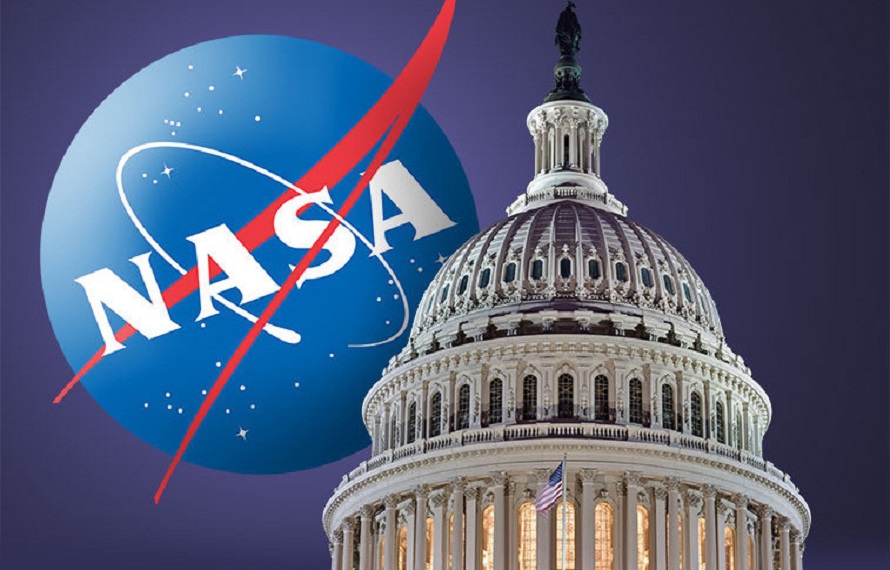WASHINGTON — A fiscal year 2023 omnibus spending bill will provide NASA with nearly $25.4 billion, an increase of more than 5% from 2022 but less than what the agency requested.
Congressional appropriators released the final version of the omnibus spending bill early Dec. 20. That bill, slated to be taken up by the House and Senate in the coming days, includes $25.384 billion for NASA in the fiscal year that started Oct. 1.
That amount is slightly less than a House bill in June that offered $25.446 billion for NASA. It is, though, significantly less than the $25.974 billion that the White House requested for NASA in its fiscal year 2023 budget proposal in March. A draft Senate bill released in July matched that request.
The amount provided for NASA in the omnibus is a 5.6% increase over the $24.041 billion the agency received in fiscal year 2022. That is slightly below the current rate of inflation, however.
The report accompanying the bill followed many of the directions in the House bill on specific NASA programs. That includes providing no less than $90 million for the Near Earth Object (NEO) Surveyor mission, a space telescope to search for potentially hazardous objects. NASA proposed only $40 million for NEO Surveyor, one-fourth of its previously projected funding for 2023, and sought to delay its launch to 2028.
The report accompanying the omnibus notes appropriators’ “concern about NEO Surveyor’s proposed launch slippage into 2028 and reminds NASA of its mandate to detect 90 percent of objects greater than 140 meters in size that threaten Earth” from an earlier NASA authorization bill. The $90 million, though, is not sufficient to keep the mission on its earlier schedule to launch in 2026, according to agency sources.
Science overall gets $7.795 billion in the bill, nearly $200 million below the request. Planetary science and heliophysics get slightly more than requested, while astrophysics, Earth science and biological and physics sciences suffer cuts.
The report affirms NASA’s recent decision to cancel the GeoCarb mission to monitor greenhouse gases that suffered delays and cost increases after its original plans to fly as a hosted payload on a commercial communications satellite fell through. The report provides $20 million for closeout costs and says that, should the instrument itself be completed with the remaining funding, NASA should find an alternative way to fly it as a mission of opportunity.
The bill provides NASA’s space technology programs $1.2 billion, less than the request of nearly $1.45 billion but a $100 million increase from 2022. That includes $227 million for the OSAM-1 satellite servicing mission formerly known as Restore-L and $110 million for nuclear thermal propulsion.
NASA’s exploration programs receive $7.469 billion, effectively the full request. Orion, the Space Launch System, Exploration Ground Systems and Artemis Campaign Development all received the full request or slightly more. That includes $1.486 billion for the Human Landing System program, the agency’s request, supporting development of a second lander alongside SpaceX’s Starship.
The report included up to $281.4 million for Mobile Launcher 2, a long-delayed platform needed for the Block 1B version of SLS. The report stated that the funding includes half the increase NASA identified it needed after the release of the budget proposal. “NASA is expected to find the other half of the estimated need from within other resources provided without proposing reductions in Congressional priorities, both in fiscal year 2023 and beyond,” the report states.
Space operations received $4.25 billion, also nearly its full request, including $224.3 million for NASA’s Commercial LEO Development effort to support work on commercial space stations to replace the International Space Station. It also sets aside $10 million for technical activities needed for a future competition to develop an ISS deorbiting vehicle.
NASA’s construction and environmental compliance and restoration account, used to fund work to build and maintain facilities, received $414.3 million, nearly the full request, but $367 million comes from a separate disaster supplemental spending bill. That supplemental also includes $189.4 million for repairs to agency facilities damaged by Hurricanes Ian and Nicole this fall.
The House and Senate are expected to vote on the full omnibus spending bill this week so that it can be signed into law before a current stopgap funding bill expires Dec. 23.
NASA Fiscal Year 2023 Budget (all values in millions)
| Account | FY23 proposal | Omnibus | Difference |
|---|---|---|---|
| SCIENCE | $7,988.3 | $7,795.0 | -$193.3 |
| – Earth Science | $2,411.5 | $2,195.0 | -$216.5 |
| – Planetary Science | $3,160.2 | $3,200.0 | $39.8 |
| – Astrophysics | $1,556.0 | $1,510.0 | -$46.0 |
| – Heliophysics | $760.2 | $805.0 | $44.8 |
| – Biological and Physical Sciences | $100.4 | $85.0 | -$15.4 |
| AERONAUTICS | $971.5 | $935.0 | -$36.5 |
| SPACE TECHNOLOGY | $1,437.9 | $1,200.0 | -$237.9 |
| EXPLORATION | $7,478.3 | $7,468.9 | -$9.4 |
| – Orion | $1,338.7 | $1,338.7 | $0.0 |
| – Space Launch System | $2,579.8 | $2,600.0 | $20.2 |
| – Exploration Ground Systems | $749.9 | $799.2 | $49.3 |
| – Exploration Other | $2,809.9 | $2,731.0 | -$78.9 |
| SPACE OPERATIONS | $4,266.3 | $4,250.0 | -$16.3 |
| STEM ENGAGEMENT | $150.1 | $143.5 | -$6.6 |
| SAFETY, SECURITY AND MISSION SERVICES | $3,208.7 | $3,129.5 | -$79.2 |
| CONSTRUCTION & ENVIRONMENTAL | $424.3 | $414.3 | -$10.0 |
| INSPECTOR GENERAL | $48.4 | $47.6 | -$0.8 |
| TOTAL | $25,973.8 | $25,383.7 | -$590.1 |
